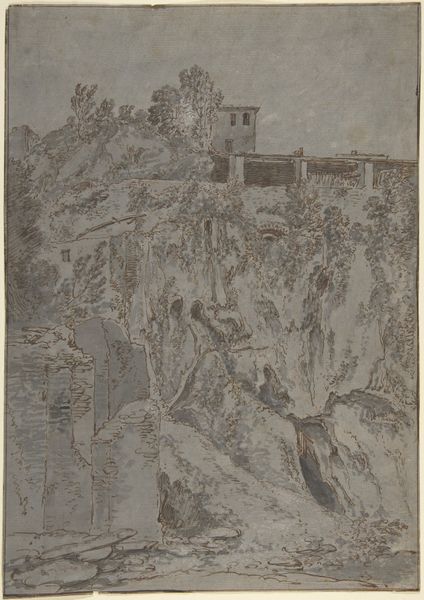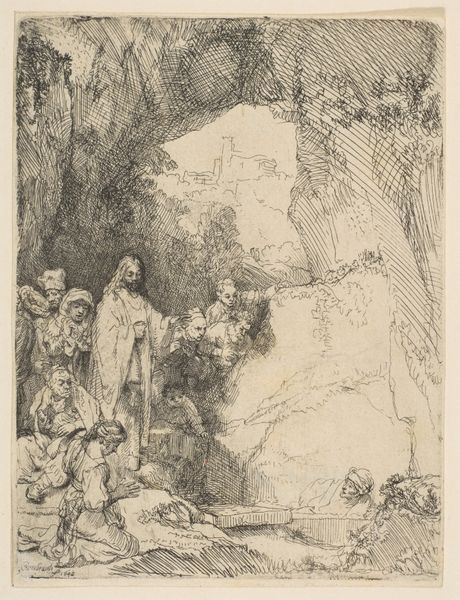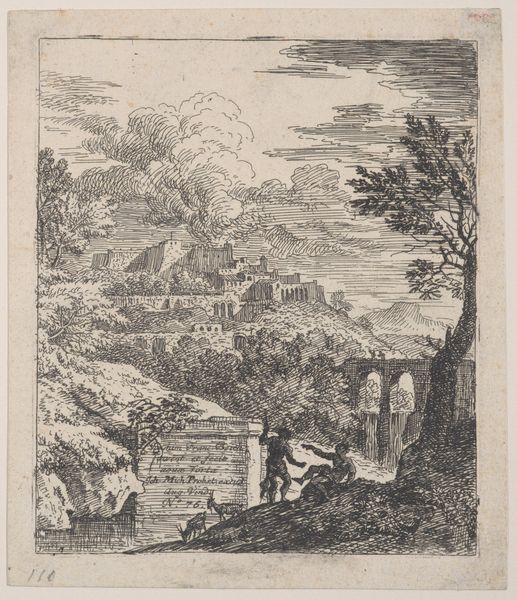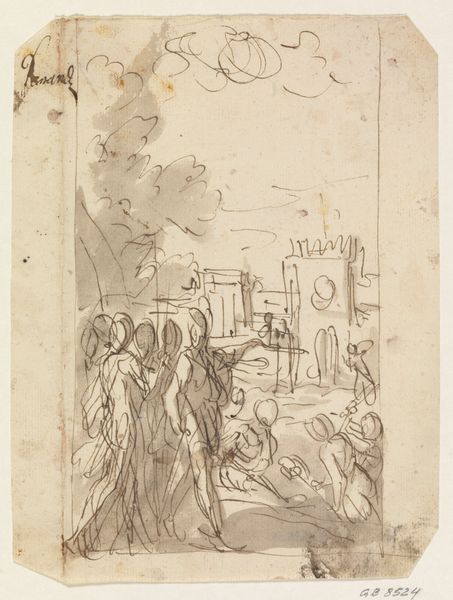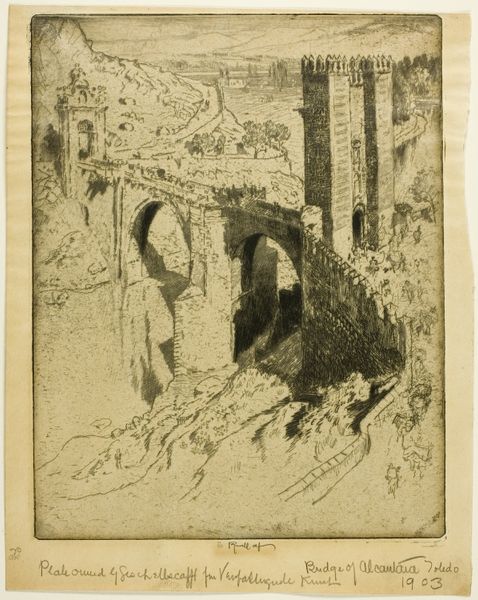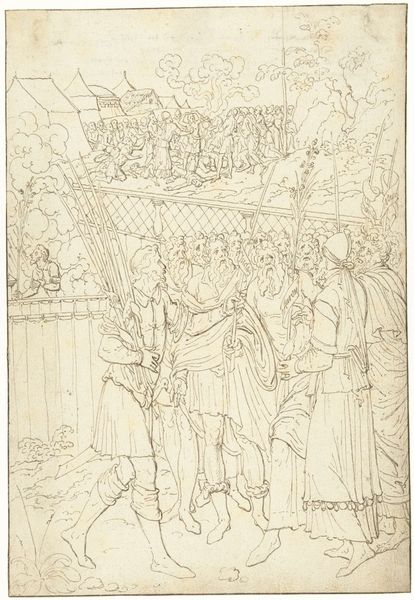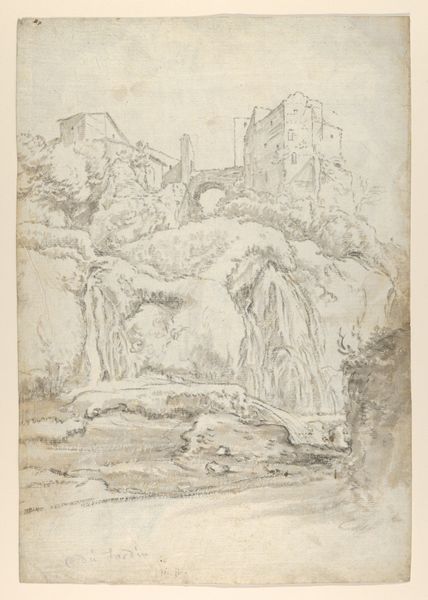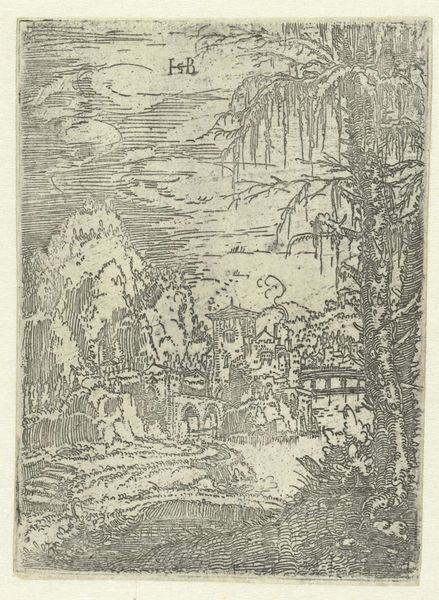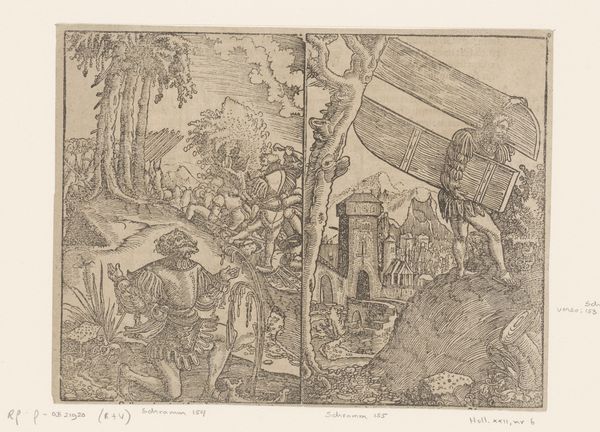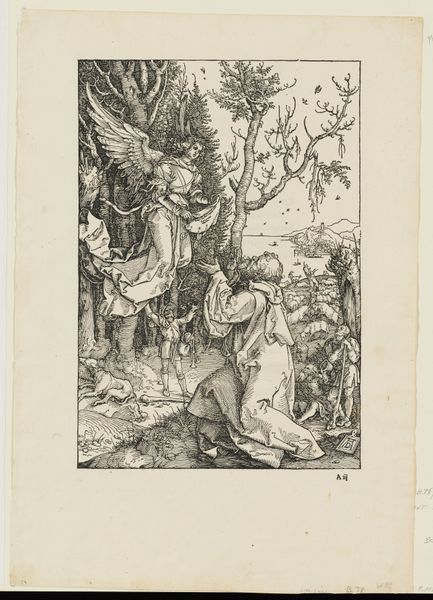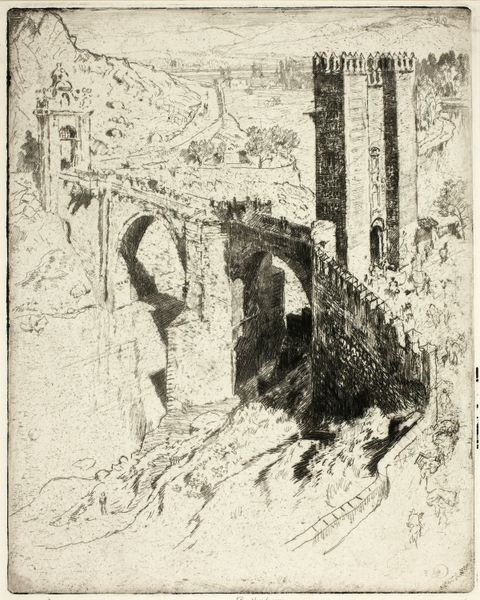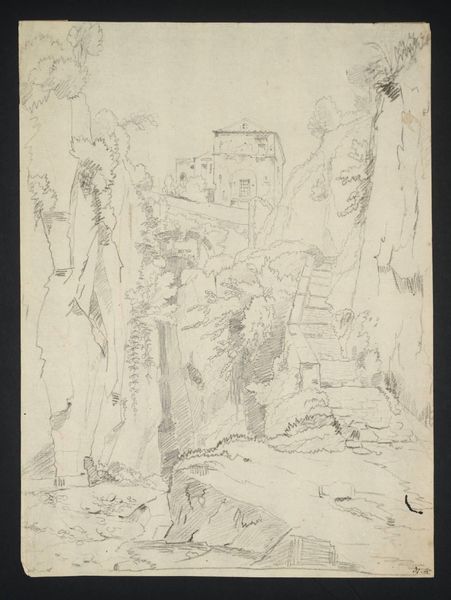
print, woodcut
#
medieval
#
narrative-art
#
pen drawing
# print
#
landscape
#
figuration
#
woodcut
#
line
Dimensions: 6 3/4 x 5 11/16 in. (17.15 x 14.45 cm) (image)
Copyright: Public Domain
Curator: So, we're looking at "Christ at the Well," a woodcut print created around 1637. It's currently held at the Minneapolis Institute of Art. Editor: My initial thought? A study in contrasts. It feels almost stark with the black and white, yet somehow incredibly busy. Look at all those lines! Curator: Absolutely. This printmaking technique allows for multiples, democratizing art in a way. The image could be widely distributed, conveying the religious narrative to a larger audience than, say, a unique painting could. Editor: And what a narrative. Christ, a cluster of onlookers, a woman drawing water, and a bustling city in the backdrop—all in a single frame. It's like a stage set. Makes you wonder who made the stage and its purpose? Curator: The production context is important. Consider the labor involved. The block of wood had to be meticulously carved to create the raised lines that hold the ink. And woodcuts, by nature, have limitations – you have to really simplify and reduce information down. It’s the very act of simplification and the medium's character which conveys its time period. Editor: Exactly! And speaking of the visual economy of line, notice how the landscape morphs into the built environment. It is such an incredible juxtaposition! What feels "natural," like a mountain backdrop and trees, and the other – a monument to people with sprawling architecture, but rendered the same way using very deliberate hatching! I mean it is so meta! Curator: That's perceptive. It asks us to consider the built environment and its impact to the setting and perhaps also reflect on cultural conditions. The choice of readily available and reusable wood is indicative of that. Editor: It's a reminder that art isn't just about the divine or the emotional – it's about material conditions, social structures, all shaping its creation and reception. But after our brief, intellectual romp into this amazing creation and thought provoking art object - that black and white contrast remains. What about this? Is there an implied moral tension created? I love it. Curator: Definitely. Seeing this reminds me of the necessity of revisiting and investigating such historical context.
Comments
No comments
Be the first to comment and join the conversation on the ultimate creative platform.
